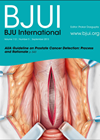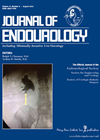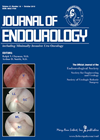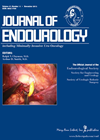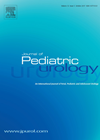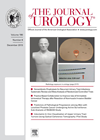
Journal Reviews archive for May 2014
Does more equal less in the management of acute renal colic?
Radiographs of kidneys, ureter and bladder (KUB) have long been used in the follow-up of patients with ureteral stones to reassess stone position and surgical planning. Emergence of computed tomography (CT) as the gold standard for the diagnosis of ureteral...
Reducing the burden of NMIBC: outpatient laser management in morbid patients
With non-muscle invasive bladder cancer (NMIBC) posing a significant burden on urological departments, alternative ways of safely and effectively managing these patients with a minimally invasive approach is desirable. As rates of recurrence are high but progression rates low, and...
Comparative effectiveness of nephron sparing surgery vs ablation
Nephron sparing surgery (NSS) and minimally invasive modality of thermal ablation have attracted great attention as an alternative surgical treatment to radical nephrectomy (RN) for renal tumours <4cm. High quality evidence comparing disease specific survival (DSS) is lacking. This issue...
Comparison of PCNL under spinal versus general anaesthesia
There are several advantages of performing percutaneous nephrolithotomy (PCNL) under spinal anaesthesia including lower cost, reduced adverse effects and less tracheal tube displacement. Another advantage is that the patient remains awake throughout making positioning easier and reducing the risk of...
Is the safety wire during ureteroscopy mandatory?
Traditional principles of ureteroscopic training involve the almost religious passage of a safety guide wire (SGW) into the ureter prior to ureteroscopy (URS). The authors compare the clinical outcomes of URS for ureteral stones in two university hospitals with opposite...
Managing staghorn calculi – a return to the dark ages of stone surgery with the aid of the robot
Khurshid Ghani and colleagues present a novel, yet all too familiar, approach to the management of patients with staghorn calculi, in the form of anatrophic nephrolithotomy - however with the aid of a robot. The aim of this study is...
Long-term consequences of posterior urethral valves
These two papers give a very good summary of the long-term effects of posterior urethral valves (PUV) into adulthood and are worth a read. Pereira et al. It is well known that the consequences of posterior urethral valves extend well...
The GMS hypospadias score
Hypospadias surgery has been carried out for decades. Descriptive parameters for hypospadias severity are variable and difficult to reproduce. The severity of abnormalities lies along a continuous spectrum. The paediatric urological fraternity is attempting to develop more reliable comparators for...
Antimuscarinics and behaviour in patients with spinal dysraphism
Since the 1980s patients with spinal dysraphism have had aggressive bladder management with clean intermittent catheterisation and anticholinergic therapy from early on in life. This strategy aims at improving lower and therefore upper urinary tract function thus decreasing the risk...
Long-term bladder drainage: blessing or disaster in disguise
Chronic bladder dysfunction occurs in many neurologic disorders e.g. multiple sclerosis, Parkinson’s disease, stroke, etc. Suprapubic catheters (SPC) are inserted every day and every urology department has a pool of ‘difficult’ patients who keep coming back. This paper compares SPCs...
Urethral sphincter function before and after radical prostatectomy
This paper from Holland will be useful for urologists involved in radical prostatectomy (RP) for cancer of the prostate. It presents a PubMed search between 1980 and 2012. Twenty-five out of 124 articles were further analysed, mainly English-language papers. Several...


